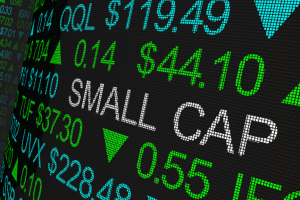
PayPal Holdings (NASDAQ:PYPL) has been in a slump since 2021. The fintech firm’s latest results suggest a positive change. PayPal stock hasn’t significantly bounced back yet. Despite an initial increase, PYPL declined. Shares remain down by nearly 80% from their all-time closing high of $308.53.
Yet while it’s frustrating that investors have yet to really warm back up to PayPal, this “on the fence” view could work to your advantage. Given the extent in which fiscal results could improve over the next two years, upside potential at present price levels is substantial.
PayPal Stock and the Market’s Whipsaw Response
On April 30, PayPal Holdings reported its fiscal results for the quarter ending March 31, 2024. For the quarter, the payment processor and digital financial services provider reported solid year-over-year growth.
Total payment volume was up 14% compared to the prior year’s quarter. Year-over-year revenue growth came in at 9%.
Not only that, adjusted earnings of $1.40 per share came in above that of both PayPal’s own guidance, as well as sell side forecasts. Alongside these solid results, PayPal’s management provided promising updates to guidance, which indicate that the company is likely to continue to, as PayPal puts it, “drive profitable growth.”
As I mentioned above, investors are not exactly enthusiastic about the turnaround. That’s why PayPal stock rallied immediately after the earnings news, but fell back shortly afterward. Admittedly, there are some valid reasons for the market’s current sentiment.
Gross payment volumes may re-accelerate. Cost-cutting efforts have clearly had a positive impact. However, some issues remain. A good example is with the number of active accounts, which continues to decline.
There is also uncertainty over whether efforts like cost cutting will only go so far, resulting in enhancements to profitability falling short of expectations.
Why Being Bullish Now Could Prove Very Profitable
A larger number of market participants may be taking a “watch and wait” approach with PayPal stock, but you may not want to wait that long before entering a position. Why?
By the time it becomes obvious that PayPal is getting fully back into full growth mode, shares will have likely already experienced a material increase in price. It’s understandable why investors are unsure about further enhancements to PayPal’s performance. However, keep in mind that much of the turnaround has yet to be implemented.
For instance, there may be further room for the company to reduce operating expenses and improve margins. Also, PayPal’s management, led by CEO Alex Chriss, is still in the process of deciding which business lines to focus on, and which to abandon.
Enhancing what works, and jettisoning what doesn’t, may result in even better revenue, earnings, and user growth numbers down the road.
Don’t forget, either, that aggressive share repurchasing also stands to provide a boost for earnings per share in the quarters ahead. Over the past year, PayPal has bought back $5.1 billion worth of its own shares. In 2024, the company could buy an additional $5 billion in PYPL stock.
The Bottom Line: Buy PYPL Before its Return to Triple Digits
If PayPal’s many-sided turnaround initiative continues to pan out, this may have a tremendous impact on earnings, both this year and the next.
According to sell side forecasts, earnings could come in at $5.14 per share this year, and at $5.65 per share in 2025. Some 2025 forecasts even call for earnings to top $6 per share. Not too shabby, given that PYPL trades for just $64 per share .
Meeting or beating these earnings targets will likely not only result in shares moving higher in tandem with a growing bottom line. This stock could also experience a new round of multiple expansion, such as to an earnings multiple of 20, on par with Square parent Block (NYSE:SQ).
Given that, if this happens, PYPL would trade for $100 and $120 per share, an investment PayPal stock could pay off in a big way.
On the date of publication, Thomas Niel did not hold (either directly or indirectly) any positions in the securities mentioned in this article. The opinions expressed in this article are those of the writer, subject to the InvestorPlace.comPublishing Guidelines.




